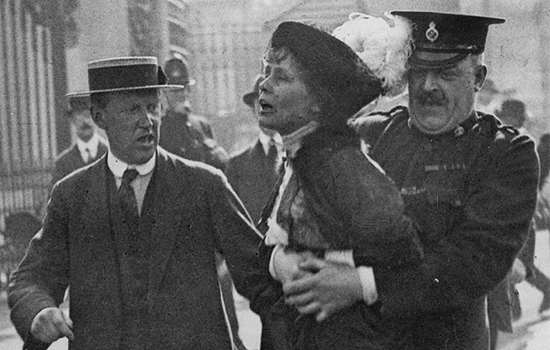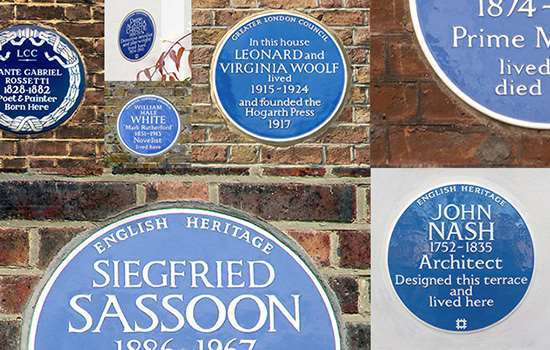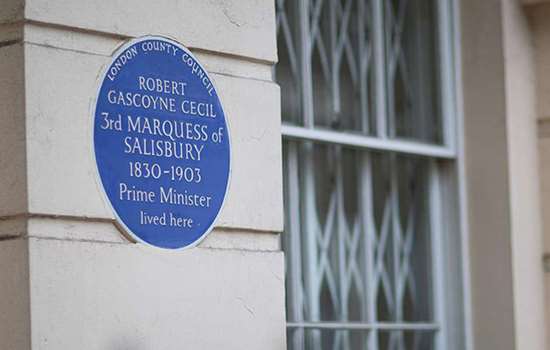The Ayahs’ Home
Plaque erected in 2022 by English Heritage at 26 King Edward’s Road, Hackney, London, E9 7SF, London Borough of Hackney
All images © English Heritage
Category
Commerce and Business
Inscription
The AYAHS’ HOME for nannies and nursemaids from Asia was based here 1900–1921
Material
Ceramic
The Ayahs’ Home, which housed women who served British families in Asia as children’s nannies, nursemaids and ladies’ maids, is commemorated with a blue plaque at 26 King Edward’s Road, Hackney. The home was based at this address from 1900 to 1921.
Who were the ayahs?
Originally, the term ‘ayah’ applied to women who served the British in India and other colonies as children’s nannies, nursemaids and ladies’ maids. It is said to derive from the Hindi, Urdu and similar Portuguese word for nursemaid.
The home welcomed women from other parts of Asia too. ‘Amah’ – probably also from the Portuguese and perhaps the familiar Chinese term for mother – referred to women of Chinese origin, especially those from Hong Kong and Singapore, who also looked after British families. The terms ‘ayah’ and ‘amah’ also applied to women from modern Sri Lanka and Myanmar, as well as Malaysia, Indonesia, Thailand and Japan.
Some ayahs worked only for the British in Asia, while others were required to travel with families on their annual return to Britain, for which reason they were sometimes also known as ‘sailor-nurses’. They looked after babies and children and their seasick mothers on the long sea voyage from the colonies to England and managed disembarkation.
The women were not usually expected to serve their host families in Britain, who typically retained permanent staff at home. They were either contracted to wait until needed for the return journey – some made the journey multiple times – or arrangements were made for their passage home. But some families did not honour the promise of a return journey or ticket, or offer the means to survive in the interim, and the nurses thus abandoned were forced into common lodging houses or the workhouse.
The Home in London
The Ayahs’ Home came into being to house travelling nurses in London – not only those stranded but also seasoned travellers awaiting return. For almost the whole of its existence, it appears to have been the only home of its kind in Britain.
The early history of the Ayahs’ Home is somewhat obscure. Most accounts begin in the late 19th century, with brief references to contemporary claims that it was started in the 1820s when a Mr and Mrs Rogers first housed a stranded ayah at their house near Fenchurch Street in the City of London. The enterprise slowly grew and saw a succession of addresses and proprietors (who referred to themselves as Mr or Mrs Rogers regardless of surname) for about 80 years, until on 1 January 1900 a new address was announced for ‘Rogers’s Original Ayahs’ Home’ at 26 King Edward’s Road, Hackney. No premises used by the Ayahs’ Home before 1900 survive.
In 1900 the Ayahs’ Home was housing between 90 and 100 women annually, with the largest concentrations in the summer. It now formed part of the work of the London City Mission Foreigners’ Branch, which had taken over from the last ‘Mr and Mrs Rogers’. While it was claimed of the original Rogers’s Home in the City that no ayah was ever turned away, under the Mission it emphatically did not ‘take charge of destitute ayahs’.
The home remained at 26 King Edward’s Road until about 2 November 1921, when the Mission opened ‘the new Ayahs’ Home’ at 4 King Edward’s Road. It survived until 1943 when, due presumably to curtailment of travel caused by the Second World War, this address began to be recorded as the East London Tabernacle Hostel.
Uncovering stories
We will never know the names and backgrounds of all the women who stayed at the series of Ayahs’ Homes. But we do know that they cared for generations of British families and played an important part in London’s immigration story and in British history more widely.
While studies of ayahs and amahs in Britain have often focused on cases of abandonment and mistreatment, research has also found that although in large part dependent on their colonial employers, these enterprising women found ways to turn the system to their advantage.
In December 1900 the Hackney and Kingsland Gazette republished an article from The Morning Leader called ‘“A little bit of Asia” in Hackney’. Of all the ‘castes and creeds, Mohammedans, Hindoos, Brahmins, from Bombay, Calcutta, Madras’, it focused on Mariammah Elangai, who after some ten years in Britain did not want to return to Ceylon. The abduction and escape of this young ‘Cingalese girl’ from one employer to another caused a sensation, reported in court, Parliament and the press, which noted her placement in the care of the Ayahs’ Home. Other accounts related how the women were separated by nationality and caste in their dormitories but spent their days together. Matron, ‘Mrs Rogers’, and her successors catered to their different culinary tastes and the home was apparently decorated in oriental fashion.
On census night 1911, before the main arrival season, there were five boarders at the Ayahs’ Home. These were the Hong Kong-born amah Ah Kum, Ceylon-born ayah Elsie Hamey, and the Indian ayahs Mary Stella, Pikya Sawmey and Mary Fernandez. Fernandez was most likely the same woman who gave her last address as the ‘Ayah’s House, 26 King Edward Road, Hackney’; she had made the journey scores of times but went down with all 331 passengers when SS Persia was sunk by a German submarine in 1915.
Further Reading
Stuart Hallifax, The Loss of the Persia (Great War London blog, 2015) (accessed 15 June 2022)
Margaret Makepeace, An Abandoned Ayah (British Library Untold Lives blog, 2016) (accessed 15 June 2022)
Olivia Robinson, ‘Travelling ayahs of the nineteenth and twentieth centuries: global networks and mobilization of agency’, History Workshop Journal, 86 (2018), 44–66 (subscription required; accessed 15 June 2022)
Jo Stanley, Ayahs at Sea (Women's History Network, 2011) (accessed 15 June 2022)
Rozina Visram, Asians in Britain: 400 Years of History (London, 2002)
Nearby Blue Plaques
More About Blue Plaques



